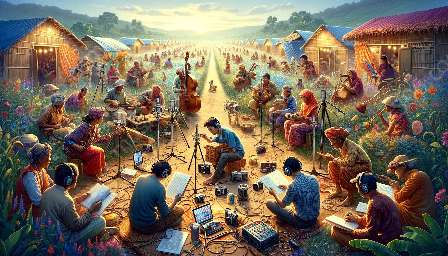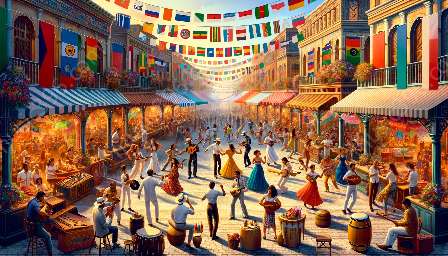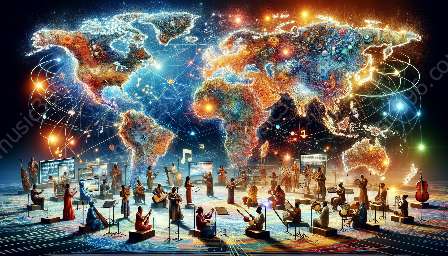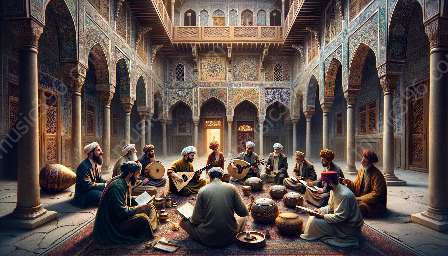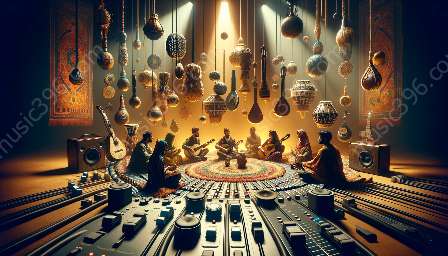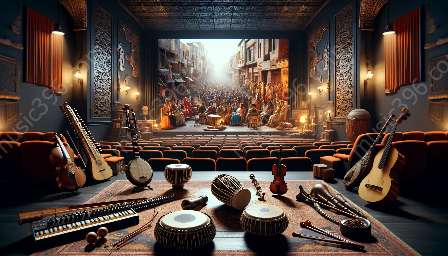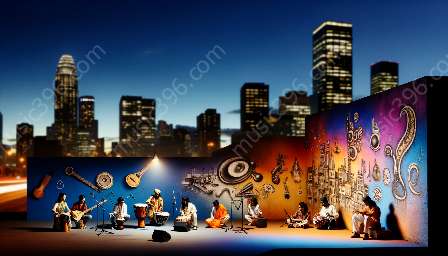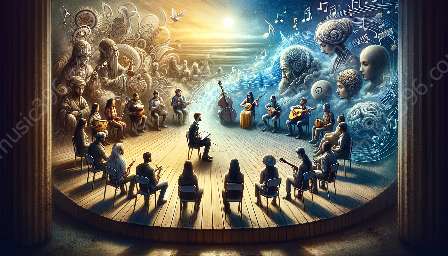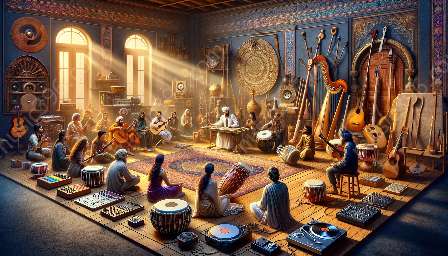South East Asian performance traditions showcase a captivating interplay of music and dance, deeply intertwined and reflecting the rich cultural tapestry of the region. This article aims to explore the cultural significance and ethnomusicological aspects of this intertwining, examining the unique dynamics and expressive forms that define the traditional arts of South East Asia.
Understanding South East Asian Music and Dance Traditions
The performing arts of South East Asia are steeped in centuries of tradition, with a diverse array of dance and music styles distinct to each cultural group. Whether it's the graceful movements of Javanese dance in Indonesia, the rhythmic beats of traditional Vietnamese music, or the vibrant expressions of Thai classical dance, these art forms represent an integral part of the region's cultural heritage.
One of the fundamental aspects of South East Asian performance traditions is the inseparable link between music and dance. In many traditional performances, music and dance are not treated as separate entities but rather as symbiotic elements that depend on each other for expression and storytelling. The music provides the rhythmic structure and emotional depth, while the dance embodies the visual representation of the narrative and cultural symbolism.
The Cultural Significance of Music and Dance Intertwining
At the heart of South East Asian performance traditions, the intertwining of music and dance holds deep cultural significance. These art forms are not merely for entertainment but serve as mediums for transmitting stories, myths, and spiritual beliefs from generation to generation. The rhythmic patterns in the music often mirror the movements in the dance, creating an evocative synergy that transcends language and resonates with the audience on a profound level.
Moreover, the interplay of music and dance in South East Asian traditions reflects the interconnectedness of various aspects of life, from religious rituals and agricultural practices to courtly ceremonies and everyday celebrations. The intricate footwork and hand gestures in dance are often accompanied by specific musical melodies and rhythms that encapsulate the essence of cultural expressions unique to each community.
Ethnomusicological Perspectives on South East Asian Performance Traditions
Ethnomusicology, as a discipline, offers valuable insights into the study of South East Asian music and dance traditions. It delves into the cultural contexts, social dynamics, and musical practices, unraveling the intricate relationships between performers, audiences, and the wider societal fabric. Ethnomusicologists examine the musical and choreographic patterns, instruments, vocal techniques, and the role of music and dance in shaping identity and community cohesion.
Through ethnomusicological lenses, South East Asian performance traditions are seen as living expressions of cultural heritage, constantly evolving yet rooted in time-honored traditions. It acknowledges the significance of music and dance as vehicles for cultural memory, identity formation, and the preservation of intangible cultural heritage within the diverse communities of South East Asia.
Exploring Diverse Forms of Musical and Choreographic Interactions
Within South East Asian performance traditions, a myriad of musical and choreographic interactions are observed, each representing unique stylistic elements and regional variations. From the intricate court dances of Cambodia to the dynamic gamelan orchestras of Bali, the interplay between music and dance unfolds in diverse forms, showcasing the cultural diversity of the region.
For example, the Indonesian tradition of Wayang Wong, or the Javanese dance drama, exhibits a seamless fusion of vibrant dance movements with the mystical sounds of gamelan music. The intricate melodic patterns of the gamelan interweave with the elaborate gestures of the dancers, creating a mesmerizing theatrical experience that epitomizes the synergistic relationship between music and dance.
Preservation and Promotion of South East Asian Performance Traditions
As South East Asian societies undergo rapid modernization and globalization, there is a growing need to preserve and promote the rich heritage of music and dance traditions. Institutions, cultural organizations, and educational initiatives play a vital role in safeguarding these traditions, advocating for their inclusion in formal education and cultural diplomacy efforts.
Furthermore, collaborative efforts between ethnomusicologists, artists, educators, and community leaders contribute to the documentation, revitalization, and transmission of South East Asian performance traditions. Through interdisciplinary approaches, digital archiving, and intercultural exchange programs, these traditions can continue to thrive and evolve while maintaining their authenticity and cultural relevance.
Conclusion
The intertwining of music and dance in South East Asian performance traditions reflects a deep-rooted synergy that embodies the cultural essence of the region. Through the lens of ethnomusicology, this interplay unveils a tapestry of musical and choreographic expressions, illuminating the interconnectedness of cultural narratives and societal practices. As the custodians of these traditions continue their efforts to preserve and innovate, the captivating realms of South East Asian music and dance traditions are poised to enchant and inspire generations to come.


